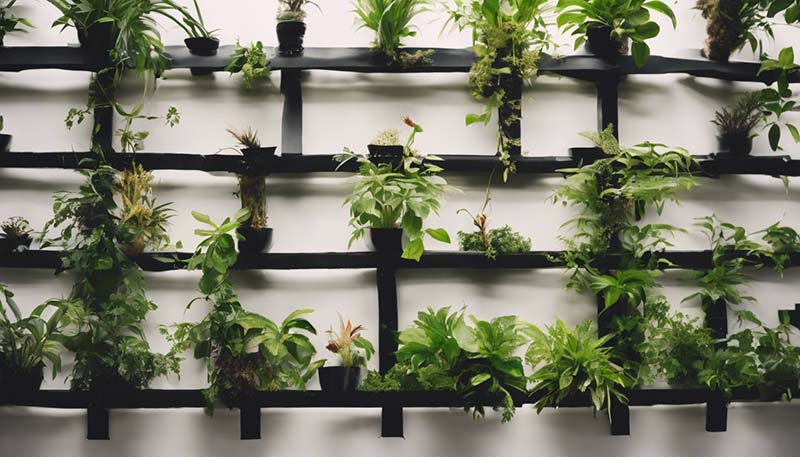Indoor Gardening Projects: How to Create a Living Wall
Living walls, also known as vertical gardens, are a contemporary and space-efficient way to bring nature indoors. They not only enhance the aesthetic appeal of your space but also provide numerous environmental benefits, such as air purification, insulation, and noise reduction. This article will guide you through the process of designing and creating your own living wall for an indoor gardening project.
Understanding the Benefits of Living Walls
Before diving into the creation process, let's explore why living walls are worth the effort:
- Air Purification: Plants naturally filter out pollutants and improve air quality.
- Aesthetics: They add a unique and organic touch to interior spaces.
- Well-being: Being around plants is known to reduce stress and improve mood.
- Humidity Control: Plants can help regulate humidity levels in your home.
- Insulation: A living wall can provide thermal insulation, saving on energy costs.
Designing Your Living Wall
1. Determine the Purpose and Location
Consider the main purpose of your living wall – whether it's for aesthetics, air purification, or both. Also, decide on the location, which will influence the type of plants you can grow and the size of your wall.
Advertisement
2. Choose the Right Plants
Choose plants that are suitable for indoor conditions and can thrive with the light, humidity, and temperature of the chosen location. Some popular choices for living walls include ferns, air plants, pothos, and spider plants.
3. Select a Living Wall System
There are various living wall systems available, ranging from modular panels to布袋式 (pocket systems) and hydroponic setups. Choose one that fits your space, budget, and maintenance preferences.
Materials You'll Need
- Living wall system (modular panels, pocket system, etc.)
- Plants suitable for indoor vertical gardens
- Growing medium (soil, hydroponic medium)
- Containers or planters (if required)
- Watering system (misting system, drip irrigation)
- Optional: Fertilizer, plant ties, and decorative elements
Creating Your Living Wall
Step 1: Plan and Layout
Measure the space where you want to install your living wall and create a layout plan. This will help you determine the number of plants and the overall design.
Step 2: Install the Living Wall System
Follow the manufacturer's instructions to install your chosen living wall system. Ensure it is securely mounted to the wall.
Step 3: Prepare the Growing Medium
If using soil, ensure it is light and well-draining. For hydroponic systems, prepare the nutrient solution according to the system's guidelines.
Step 4: Plant Your Living Wall
Carefully place your plants into the pockets, panels, or containers of your living wall system. Consider the size of the plants at maturity and space them accordingly.
Step 5: Set Up a Watering System
Install a watering system that will adequately water your plants without over-saturating the medium. This could be a simple drip irrigation system or a more complex automated system.

Step 6: Provide Proper Lighting
Indoor living walls may require supplemental lighting, especially if they are placed in low-light areas. Choose the right type of grow light suitable for your plants' needs.
Step 7: Maintain Your Living Wall
Regular maintenance is key to a thriving living wall. This includes watering, fertilizing, pruning, and checking for pests.
Ongoing Care and Maintenance
After your living wall is established, here are some tips for ongoing care:
- Watering: Keep the growing medium consistently moist but not waterlogged.
- Lighting: Ensure your plants receive adequate light, especially if they are not in a naturally bright space.
- Fertilizing: Use a balanced, water-soluble fertilizer as needed, following the product's instructions.
- Pruning: Regularly trim your plants to maintain their shape and size.
- Pest Control: Keep an eye out for pests and treat them promptly with organic or chemical controls, depending on your preference.
Conclusion
Creating a living wall is an innovative way to incorporate nature into your indoor space. With careful planning, selection of the right plants and system, and consistent care, your living wall can be a beautiful and functional addition to your home or office.
Remember, the key to success with any indoor gardening project is patience and attention to your plants' needs. Happy gardening!
Comment